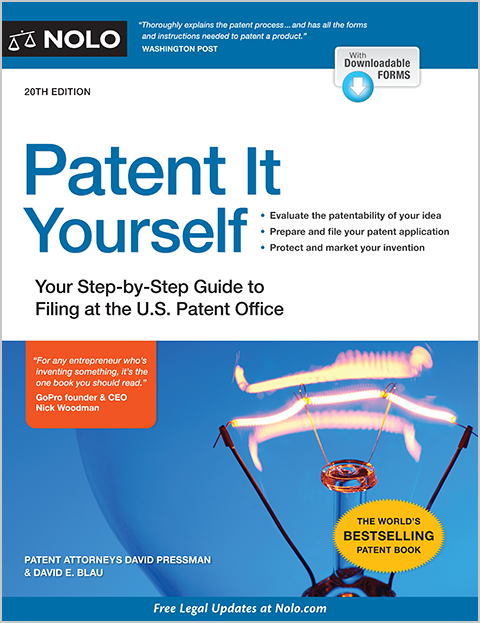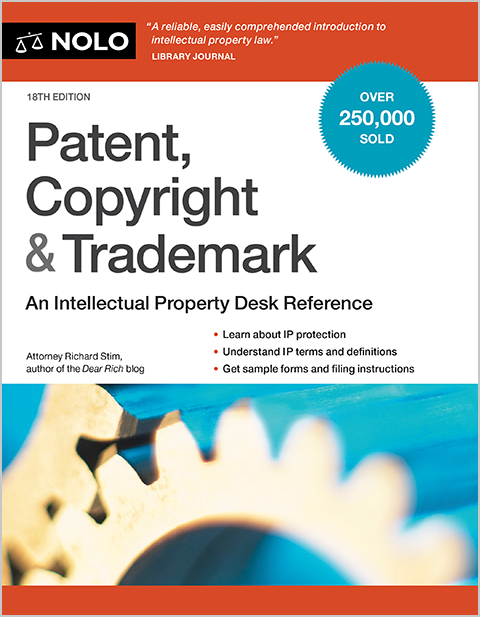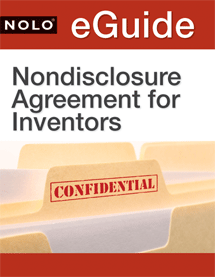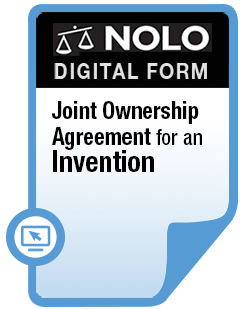The federal Supplemental Register is a secondary list for trademarks and service marks that don't qualify for the Principal Register.
If you have a trademark, you probably want to register it with the United States Patent and Trademark Office (USPTO) to keep others from using it.
The most common place to register your trademark is the Principal Register. As explained below, the Principal Register should always be your first choice.
But if your trademark doesn't meet the requirements for the Principal Register, there's another, lesser-known register available: the Supplemental Register. It's a secondary list—with a smaller but important set of protections—that the USPTO maintains for trademark owners.
What Is a Trademark?
A trademark is any word, phrase, design, or combination of these features that
- identifies the provider of goods or services, and
- distinguishes particular goods or services from the goods or services of someone else.
To be registrable (or recognized by the USPTO), a trademark must be used in commerce.
"Use in commerce" means that the trademark is used in connection with goods that are sold or transported or services that are performed between:
- two or more states ("interstate")
- the United States and a territory of the United States—for example, between the United States and Puerto Rico, or
- the United States and a foreign country—for instance, between the United States and Mexico.
(15 U.S.C. §1127 (2022).)
Trademark Benefits: Principal Register vs. Supplemental Register
You can apply to register your mark with the USPTO either on the Principal or Supplemental Register. The Principal Register is the preferred register for trademark owners because it offers more benefits and protections.
Specifically, the Principal Register has the following benefits that the Supplemental Register doesn't:
- a legal presumption of ownership and an exclusive right to use the trademark, both of which you can use as evidence in an infringement lawsuit
- support for a later claim of "incontestability" status, which gives your trademark extra protections, and
- the ability to record your trademark registration with the U.S. Customs and Border Protection to keep infringing users from importing goods into the U.S.
Even though it plays second fiddle, the Supplemental Register does have benefits. (It's just that the Principal Register has more.) If you register your trademark on the Supplemental Register, you can enjoy:
- the right to use the circled "®" or "Reg. U.S. Pat. Off." abbreviation to discourage would-be infringers
- placement on the USPTO database to prevent similar trademarks from registering
- the ability to register the mark in other countries that offer reciprocal trademark rights, and
- the chance to obtain relief in an infringement lawsuit in federal court.
But, to be fair, it's often difficult to prove infringement of a mark listed on the Supplemental Register. Registration on the Supplemental Register is an admission by the owner that their trademark isn't distinctive enough to be placed on the Principal Register.
What Kinds of Trademarks Appear on the Supplemental Register?
The USPTO decides what register a trademark should be listed on based on one factor: distinctiveness. If the USPTO considers a trademark to be distinctive, then it's allowed on the Principal Register. All other trademarks, with few exceptions, are placed on the Supplemental Register.
In determining whether a trademark is distinctive, the USPTO determines where on the distinctiveness spectrum the trademark falls. There are five levels of trademark distinctiveness.
1. Generic Trademarks
A generic trademark is made up of only words or designs that generally describe the goods or services associated with the trademark. For instance, "gas station" refers to a place where you get gas rather than a specific provider's service station.
Generic trademarks don't qualify for either register because, by definition, a generic term calls to mind a type of product rather than a specific product. Generic trademarks have no distinctiveness and can only be registered on the Supplemental Register if the trademark also contains descriptive wording that isn't generic.
2. Descriptive Trademarks
A descriptive trademark is made up of words that describe a particular quality, ingredient, or aspect of the associated goods or services. For instance, "American Airlines" for a U.S.-based airline is an example of a descriptive trademark.
Surnames (like "Johnson" or "Williams") and geographically descriptive trademarks (like "Midwest" or "New England") are a couple kinds of trademarks that can only go on the Supplemental Register.
But descriptive trademarks can be considered distinctive enough for the Principal Register if they gain secondary meaning (or "acquired distinctiveness").
Acquired distinctiveness is when a trademark becomes more than its literal meaning. If buyers see a trademark as associated with providing a set of goods or services rather than as merely a description of those goods or services, then the trademark has acquired distinctiveness and gained secondary meaning.
Going back to our example, "American Airlines" has acquired secondary meaning. When buyers hear the airline name, they don't think of the name as a description of the travel services. Instead, they immediately think of the company providing the services.
Descriptive trademarks can gain secondary meaning or acquire distinctiveness by the owner:
- using the trademark for at least five years
- registering a similar trademark, or
- presenting actual evidence that the public views the mark as distinctive—for instance, providing extensive advertising or market research that shows that consumers see your trademark as identifying you as a distinctive provider of your goods or services.
If an owner believes their mark has acquired distinctiveness, they can submit their evidence to the USPTO for review. The owner will either provide their evidence in the initial application or later on in the application process in response to an office action.
3. Suggestive Trademarks
Suggestive trademarks are similar to descriptive trademarks but require more thought. Suggestive trademarks imply rather than outright state some aspect of the connected goods and services.
For example, "Jaguar" for cars is suggestive. Jaguars are fast and the car brand is known for making fast cars. Because the brand name is not "fast cars," which would be descriptive and instead describe something that gives the impression of speed, the trademark would be considered suggestive.
Suggestive trademarks are distinctive but are the weakest of the distinctive trademarks. Suggestive trademarks are registrable on the Principal Register.
4. Arbitrary Trademarks
In the middle of the pack of distinctive trademarks are arbitrary trademarks. Arbitrary trademarks are made up of words or designs that are unrelated to the associated goods or services.
For instance, "Amazon" for an online retail store is arbitrary. "Amazon" is a real word, but it has nothing to do with online retail store services. Arbitrary trademarks are registrable on the Principal Register.
5. Fanciful Trademarks
Fanciful trademarks are the most distinctive trademarks and are registrable on the Principal Register. Fanciful trademarks consist of made-up words. For instance, "Kodak" for cameras is fanciful because it's not a real word.
What About Partially Distinctive Trademarks?
You might wonder what happens when your trademark consists of more than one type of distinctive trademark.
For example, assume you use the name "Cotton Candy Balloon Company" to sell party balloons. "Cotton Candy" would be arbitrary. But "Balloon Company" would be generic. You could still register your entire trademark "Cotton Candy Balloon Company" on the Principal Register because part of it is arbitrary.
That's the rule: As long as your trademark has one portion that is distinctive—whether a word or image—it'll be considered distinctive and registrable on the Principal Register. But be aware that you'll be required to "disclaim" any unregistrable words. Disclaiming a word doesn't mean that your word is removed from your registration. It just means that someone else can use that word in their trademark.
Going back to our example, you would need to disclaim "Balloon Company" because these words aren't distinctive. Your trademark would still be "Cotton Candy Balloon Company." But someone else can use the words "balloon" or "company" as long as their trademark isn't too similar to yours.
How to Register Your Trademark On the Supplemental Register
If you've determined your trademark would be registrable on the Supplemental Register, you'll need to submit an application to the USPTO to register it there.
Your trademark will go through the same process as trademarks applied for on the Principal Register. But while trademarks in an application for the Principal Register don't have to be in use yet, trademarks in applications for the Supplemental Register do.
The USPTO will review your application to make sure your trademark isn't too similar to one that has already been registered or applied for. Before you apply, do a trademark search to make sure your trademark is available to register.
You'll want to be especially careful you're not using someone else's trademark if yours is descriptive. Many trademark owners will be tempted to use descriptive words to describe their goods or services because doing so clearly communicates their business to customers. These kinds of descriptive trademarks can often be repeated or overlap too much, so you'll just want to make sure yours is one of a kind.
Alternatively, you can apply for your trademark on the Principal Register. If, during the review process, the trademark examiner requires you to move over to the Supplemental Register, you can make the change within your existing application.
If you have a descriptive trademark, you can even register it on the Supplemental Register and then reapply for the Principal Register once your trademark has gained secondary meaning.
Consulting a Trademark Attorney
It can be hard to make the call on whether your trademark should be placed on the Principal or Supplemental Register. Because switching to the Supplemental Register is free, it's normally a good idea to start with the Principal Register.
If a trademark examiner doesn't accept your trademark on the Principal Register, then it could be a good time to seek help from a trademark attorney. An attorney can let you know if switching to the Supplemental Register is the best option or if it's worth fighting to get your trademark on the Principal Register.
Talk to a Lawyer
Need a lawyer? Start here.
How it Works
- Briefly tell us about your case
- Provide your contact information
- Choose attorneys to contact you
- Briefly tell us about your case
- Provide your contact information
- Choose attorneys to contact you



